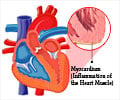A new study has found that peripheral arterial disease (PAD) of the legs is often overlooked in patients with known heart disease. PAD is a condition in which the arteries are blocked with plaque, and blood supply to the legs gets cut.
Early detection of PAD is important because it can limit the ability to walk and exercise, it may place patients at greater risk for limb loss and it increases the chance of having a heart attack or stroke.The study, led by Dr. Issam D. Moussa of New York Presbyterian Hospital/Weill Cornell Medical Center, involved nearly 800 patients with ischemic heart disease who were to undergo coronary angiography and/or intervention and were either at least 70 years old, or between the ages of 50 and 69 and had a history of diabetes mellitus and/or tobacco use.
Researchers determined if patients had PAD by calculating the Ankle-Brachial Index, the ratio of the blood pressure in the lower legs to blood pressure in the arms, which is normally the first test administered to patients in cases where PAD is suspected. Patients also answered questionnaires on PAD awareness and functional status.
The results showed that approximately one out of six patients had previously unrecognized PAD, despite being under the care of a cardiovascular specialist.
The researchers point out that this includes only those with previously undiagnosed PAD and does not represent the total prevalence of PAD in patients with heart disease, which is actually much higher. Most patients with PAD did not limp or have leg pain, two symptoms of the disease.
"The combination of physician lack of awareness and lack of symptoms among patients results in failure to diagnose PAD, even in patients who are at high risk. Furthermore, clinical evaluation alone often lacks the sensitivity and specificity to optimally identify PAD particularly in less advanced stages and in hospitalized patients with CAD," the researchers said.
Advertisement
Source-ANI
TAN















